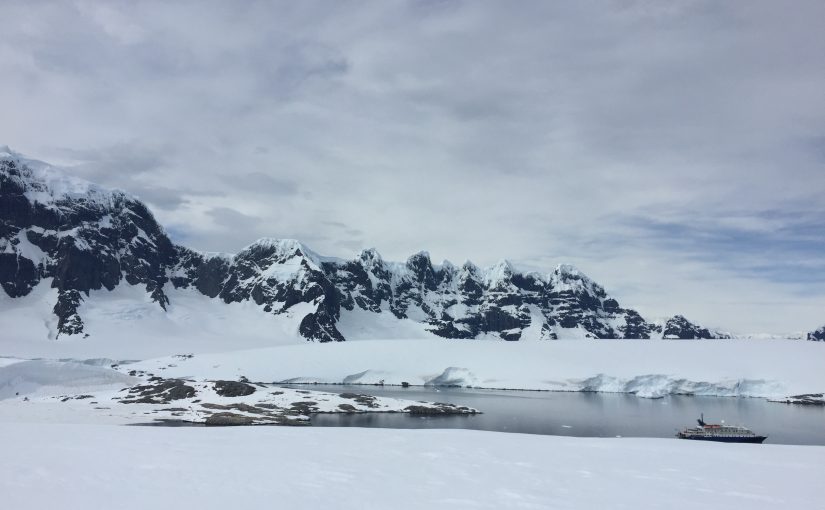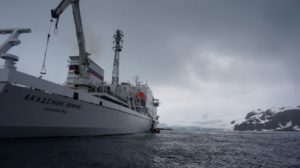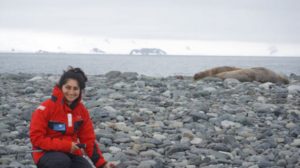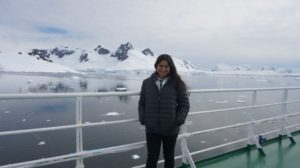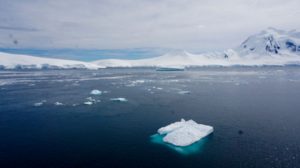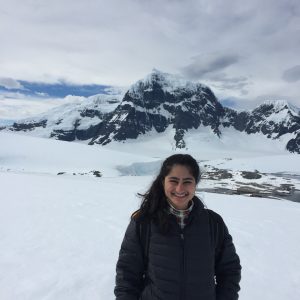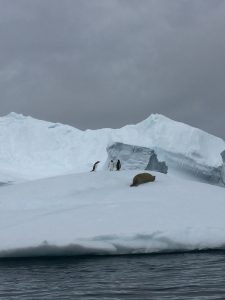As a follow-up to my last blog-post, I wanted to expand on my takeaways from my ten-day excursion to Antarctica. One of my best learning opportunities was simply observing how others passengers interacted with the land, and consequently, how effective the International Association of Antarctica Tour of Operators (IATTO) was in practice. IAATO is a self-governing mechanism that promotes environmentally responsible travel to Antarctica for private operators, such as OneOcean expeditions.
While crossing the Drake Passage, the “roughest stretch of sea in the world,” on our way to Antarctica, we attended two mandatory lectures under IAATO, which outlined Guidance for Visitors to the Antarctic. These sessions informed us about the importance of leaving no trace, respecting protected areas, and distancing ourselves from wildlife (Reflections, 2007). With the latter example, failure to do so could have disastrous consequences, such as scaring the penguins, causing them to run away and potentially break a foot or change path, forcing them to exert extra energy when going down to the ocean to feed.
Our first stop was in the South Sheltand Islands at Yankee Harbour. The other passengers and I were lucky enough to witness elephant seals and chinstrap penguins interspersed infrequently throughout the gentoo penguin dominant colonies. Despite this being the first excursion however, I noticed that some passengers willfully ignored some of the guidelines discussed during the IAATO briefing; as I vividly recall one passenger got within three meters of an elephant seal. It was interesting to see how some animals adapted to a humans’ presence better than others; for example, the penguins at Port Lackroy were quite comfortable around humans, in contrast to the scua I saw on Yankee Harbour, which howled at me as I inadvertently got close to its eggs. This phenomenon demonstrates how vital IAATO is in preventing alterations of animal behavior.
The main problem with IAATO, is that monitoring is sparse, therefore, the voluntary provision is very hard to enforce. From my observations, the honor system wasn’t always enough to avoid such violations, and it would be unrealistic for the OneOcean staff to micromanage every passenger while on land. Subpar boot washing also occurred as the quality of the scrubbing severely diminished over time. This ties directly into The Agreed Measures for the Conservation of Antarctic Flora and Fauna of 1964, which deals with the restriction on interference of wildlife, the establishment of protected areas, restrictions on introduction of non-indigenous species, and a category of specifically protected species introduced (Liggett, 2015).
Moreover, I was shocked by the lack of effort taken to cover up large indents in the snow as a result of a human step, or our sleeping holes when camping out on Leith Cove. On our daily hikes, people would often stray from the designated path or walk over penguin highways without much awareness of the ecosystem impacts. A few of my classmates set out to help cover up these holes, however I feel that a simple check by the crew could help avoid some of this negligence displayed by fellow passengers, in preserving the terrain. Although failure to cover up these holes has less to do with the possibility of penguins getting trapped in the snow, the concept of leaving no trace was not executed in every interaction with the land.
Although the aforementioned experiences are very targeted learning experiences, I never would have known that IAATO is breached consistently. I think it is admirable that many tour companies voluntarily abide by IAATO and do their best to avoid altering animal’s habitats. However, I think monitoring and enforcement mechanisms could be better, such as stationing one staff member at the boot washing station following excursions. It is entirely possible for a company to be a part of IAATO and not abide by its guidelines, but I commend the OneOcean staff for attempting to adhere to the provisions. Overall, I believe that we did a good job of minimizing impact, but need to compensate for others in the group who often forget about the harmful effects a footprint can have.
This experience complements my Dartmouth education as it reinforces fundamental concepts from my environmental justice, environmental law, and issue’s of the Earth’s cold regions. I hope to learn more about Antarctica’s unique environmental policy in the context of global relations and excited at the prospect of implementing feasible solutions to become an effective Antarctic ambassador and policy leader in the years to come.
References:
Guidance for Visitors to the Antarctic. (2016). Retrieved December 9, 2016, from http://iaato.org/c/document_library/get_file?uuid=022e237f-740e-4e7a-b952-a8acfe5d45c8&groupId=10157
Liggett, D. (2015). Tourism in Antarctica. Exploring the Last Continent, 379-398. doi:10.1007/978-3-319-18947-5_18
Reflections: At the end of the Earth. 2007. (pp. 1-51, Rep.). (n.d.).
